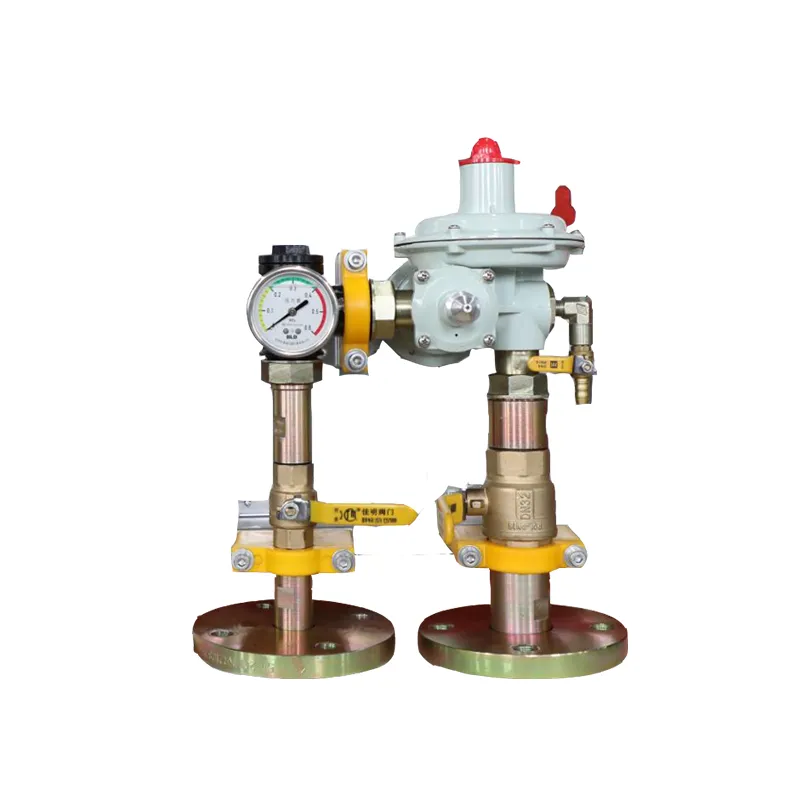
Nov . 09, 2024 23:37
Back to list
Natural Gas Pressure Regulation System Design and Efficiency Optimization Techniques
Understanding Natural Gas Pressure Regulators
Natural gas pressure regulators play a crucial role in the distribution and utilization of natural gas in residential, commercial, and industrial applications. Their primary function is to ensure the safe and efficient delivery of natural gas at the correct pressure, which is vital for various applications, including heating, cooking, and powering equipment.
What is a Natural Gas Pressure Regulator?
A natural gas pressure regulator is a mechanical device that automatically reduces the high pressure of gas supplied from pipelines to a lower, usable pressure for end users. High-pressure gas is necessary for transportation through pipelines over long distances, but once it reaches the end-user location, it must be at a lower pressure to be safely used in appliances and equipment.
How Do Pressure Regulators Work?
Pressure regulators operate on the principle of balancing force. They contain a spring-loaded diaphragm that senses the pressure downstream (the pressure that is experienced by the appliances). If the downstream pressure falls below a certain level, the diaphragm moves, opening the valve to allow more gas to flow through. Conversely, if the pressure increases beyond the set point, the diaphragm moves in the opposite direction, reducing gas flow until the desired pressure is maintained. This automatic adjustment ensures that appliances receive a consistent and reliable gas supply, thereby optimizing performance and enhancing safety.
.
There are several types of natural gas pressure regulators, each designed for specific applications. The most common types include
منظم ضغط الغاز الطبيعي

1. First-Stage Regulators These are typically used in high-pressure distribution systems. They reduce the pressure from the main supply line to a medium pressure, typically needed for further distribution.
2. Second-Stage Regulators Found in residential settings, these regulators further reduce the medium pressure provided by the first-stage regulator to a low pressure suitable for household appliances such as stoves and furnaces.
3. Line Regulators Often used in commercial and industrial applications, these regulators maintain a constant pressure in a gas line, ensuring that all connected equipment receives the required pressure without fluctuations.
4. Relief Valves While not regulators in a strict sense, these safety devices are crucial in the system. They prevent excess pressure buildup by venting gas if the pressure exceeds a safe threshold.
Importance of Pressure Regulators
Pressure regulators are essential for several reasons. First, they contribute to safety by preventing potential accidents caused by overpressure situations, which can lead to leaks or explosions. Secondly, by ensuring that the gas is delivered at the correct pressure, they enhance the efficiency of appliances, leading to lower energy costs and reduced waste. Lastly, they are critical in maintaining consistent gas flow, which is necessary for the optimal performance of all gas-powered appliances.
Conclusion
In conclusion, natural gas pressure regulators are vital components in the natural gas delivery system. They ensure that gas is provided at an appropriate pressure, safeguarding users while maximizing the efficiency of appliances. As the demand for natural gas continues to grow, the importance of reliable and effective regulators cannot be overstated. Proper installation, maintenance, and regular inspections of these devices are crucial for ensuring safety and functionality, ultimately contributing to the effective utilization of natural gas in our daily lives.
Latest news
-
Safety Valve Spring-Loaded Design Overpressure ProtectionNewsJul.25,2025
-
Precision Voltage Regulator AC5 Accuracy Grade PerformanceNewsJul.25,2025
-
Natural Gas Pressure Regulating Skid Industrial Pipeline ApplicationsNewsJul.25,2025
-
Natural Gas Filter Stainless Steel Mesh Element DesignNewsJul.25,2025
-
Gas Pressure Regulator Valve Direct-Acting Spring-Loaded DesignNewsJul.25,2025
-
Decompression Equipment Multi-Stage Heat Exchange System DesignNewsJul.25,2025

